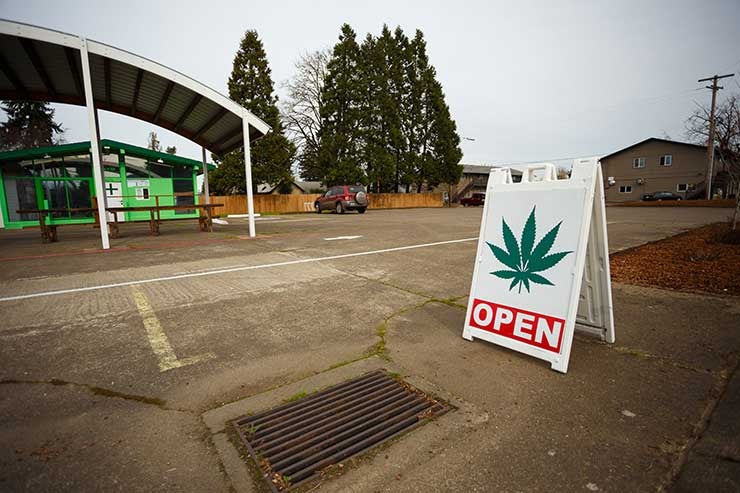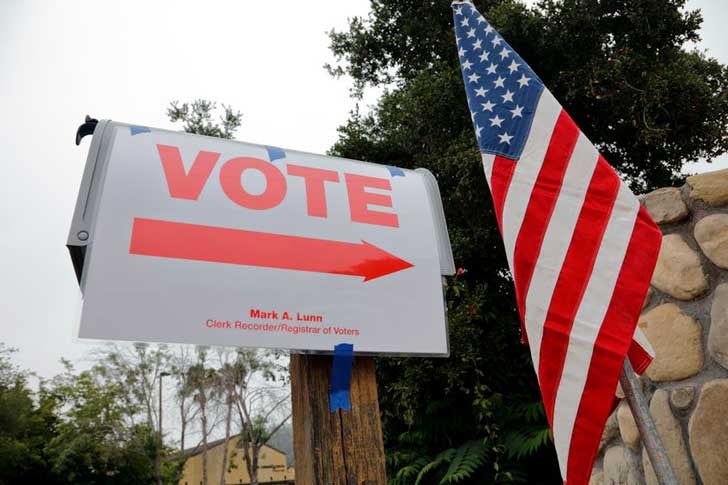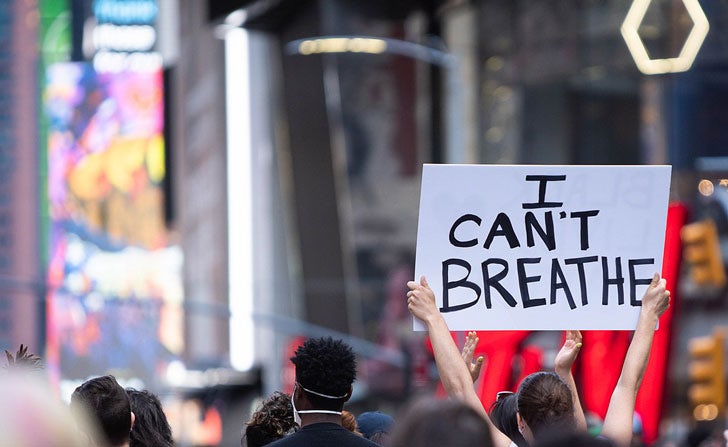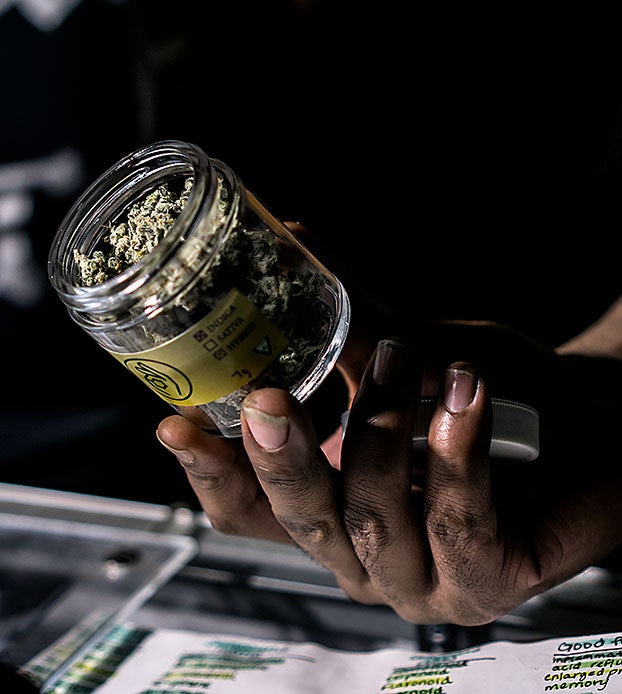It’s that time of the year again, when we look back at the top stories from the past 12 months and ask, what stood out, what will we remember a decade from now, what have we already forgotten, and what does it all mean? Unfortunately, this past year has made every “top stories” list quite short: the COVID-19 pandemic.
But amid this dark, traumatic, world-shattering year, there were real moments of optimism, especially when it comes to cannabis. We took a look at everybody’s worst year ever, and found our top five silver linings for weed.
1. Cannabis becomes an essential service during the pandemic

This was a year in which memes helped us stay (mostly) sane, and two cannabis memes stood out from the crowd: “who would’ve thought one day we’d be smoking weed at a family gathering, and the family gathering would be the illegal part,” and “In 10 years, cannabis went from illegal, to legal, to essential.”
In March, as lockdown orders went into effect across the United States in an attempt to slow the spread of COVID-19, marijuana instantly attained a new status: essential service. In every state with a legal medical or recreational cannabis program, governors and municipality leaders ruled that cannabis dispensaries were an essential health care service — much like pharmacies and clinics.
Overnight, dispensaries implemented social distancing guidelines and moved towards pick-up only services, as well as delivery where legal. The safety demands also saw a number of jurisdictions pass temporary measures allowing marijuana delivery, fostering hope that just as necessity can be the mother of invention, epidemiology could be the trigger for an easing of restrictions on legal cannabis sales, and new customer-friendly guidelines could potentially become permanent.
The pandemic also saw the rise of remote work and schooling, and saw countless people leaning on marijuana as a way to cope with the anxiety, fear, and cabin fever of sheltering in place.
Will cannabis remain “essential” after we emerge from the pandemic? That’s hard to say, but it’s clear that marijuana has established a place in North American society that was not there in the halcyon days of 2019.
Medical cannabis patients and advocates have expressed hope that these changes will translate into greater access for patients long after the lockdowns are lifted once and for all.
2. Five US states approve legalization measures

Whether or not your candidate won or lost (or is contesting the vote) on November 4th, cannabis legalization was a resounding winner on Election Day, no matter how you read the electoral map.
Voters in four states — New Jersey, Arizona, Montana, and South Dakota — approved ballot measures that legalized both medical and recreational cannabis, while a whopping 74% of voters in Mississippi approved a ballot measure to legalize medical marijuana and establish a state system for licensing dispensaries.
The results weren’t close for any of the legalization votes. Also, three of the five states are among the reddest, most conservative states in the country. The results arguably send the message: If Mississippi can pass medical marijuana legalization, why can’t everyone else? If South Dakota can legalize cannabis for adult use, then what’s the holdup? (We’re looking at you Texas, Minnesota, Iowa, Wisconsin — the list is still long)
The vote provides further indication of the momentum behind marijuana legalization, which is now supported by more Americans than ever before, according to a Gallup poll released in late 2020.
3. More cannabis research in 2020 than any year in history

Seldom a week went by in 2020 that didn’t see headlines surrounding the publication of a new study on cannabis.
In fact, according to data compiled by the National Library of Medicine and PubMed.gov, there were some 3,595 studies on marijuana published in the past year, representing more than 10% of all cannabis-related studies in the database over the past 60 years.
The research published in 2020 covered everything from the efficacy of cannabis in treating a variety of illnesses, prenatal cannabis use, adolescent marijuana use, how legalization affects cannabis use rates, and much, much more. In fact, in only two weeks since NORML celebrated the record number of published studies in 2020, almost 70 new studies were published.
The increase in cannabis research can be linked to a number of developments in recent years, in particular the spread of cannabis legalization and greater mainstream acceptance of cannabis use and legalization.
4. Protests put a spotlight on cannabis and criminal justice

This summer, a Minneapolis police officer knelt on the neck of George Floyd, an unarmed black man from Houston, for more than 8 minutes, killing Floyd in broad daylight as a cellphone recorded everything. The footage went global, sparking the largest social unrest in the United States since the assassination of Martin Luther King, Jr. in 1968.
Protests and rioting spread to virtually every metropolitan area in the United States — and no shortage of small towns and rural locales — sparking a nationwide debate on racism, police brutality, inequality, and criminal justice reform.
For many activists, protesters, and just sympathetic observers, repairing the devastation the war on drugs brought to Black and brown communities was a central component of the change that needs to take place in America.
This put the spotlight on the cannabis industry, where as little as 17% of executives are minorities and only 1% of dispensary storefront owners are black, according to analysis performed in 2016. This is despite the fact that Black and brown people have for decades been disproportionately overrepresented among those arrested for marijauan offenses.
This renewed focus on the war on drugs, criminal justice reform, and the need for more diversity in the cannabis industry could mean that in 2021 we will see more legislation and activism devoted to making sure that the windfall brought on by cannabis legalization won’t skip over those very communities that paid the highest price under prohibition.
5. Sports and cannabis become a winning combination in 2020

Something big happened in cannabis on a weird Saturday night in Los Angeles in November. Boxing legend, podcaster, and pigeon trainer Mike Tyson squared off against fellow legend Roy Jones Jr. in an exhibition fight sponsored by WeedMaps.
The undercard included a bizarre, embarrassing (for the loser) fight between YouTuber Jake Paul and former New York Knick Nate Robinson, which saw Robinson’s spirit leave his body as he was pummeled by Paul, becoming an instant laughing stock online.
But throughout it all, the WeedMaps logo was front and center on the canvas, sending the message that if we all got used to alcohol sponsored sporting events, then why not weed?
In general, 2020 saw some big moves in cannabis and sports, especially in basketball. In June the NBA announced that it wouldn’t test players for marijuana during the NBA “bubble” held in Orlando, Florida. The NBA later announced that it would extend the marijuana-testing moratorium into the 2020-2021 season, possibly making it a permanent reality.
This era of tolerance also extends to baseball, where Major League Baseball in late 2019 announced that it was removing marijuana from its “drugs of abuse” list.
Truly, the world of sports is warming on cannabis, and 2020 saw this trend continue in a big way.
Okay, we know we said there were five, but here’s a sixth.
6. Americans spend nearly $18 billion on cannabis
If there was ever a year that made you want to huddle on the couch and smoke some herb, it was 2020. And that’s not just a feeling, we’ve got the stats back it up.
According to figures compiled by Leafly, state tax and revenue data indicate that national sales of medical and adult use marijuana totaled $17.9 billion in 2029, 67% more than the $10.7 billin in 2019. In nine states — Arkansas, Connecticut, Florida, Illinois, Maine, New Jersey, North Dakota, Ohio, and Pennsylvania — 2020 sales were double that of 2019, according to Leafly.
This could partly be linked to panic shopping by cannabis patients and casual users who rushed to stock up before they got put on lockdown, but according to Leafly, this rise in purchasing in April stayed steady over the remainder of the year. The figures also indicated that established customers were also increasing the amount of cannabis they were purchasing, with average monthly spending increasing from 25-40% among regular users, Leafly reported.
This increase should also be linked to the fact that three states — Michigan, Maine, and Illinois — officially began legal adult-use cannabis sales in 2020.
It’s still too early to say what 2021 will bring, but if the past year was any indication, cannabis has a knack for thriving in times of adversity, and whatever comes our way, you should expect weed to come out on top.
Sign up for bi-weekly updates, packed full of cannabis education, recipes, and tips. Your inbox will love it.

 Shop
Shop Support
Support
















